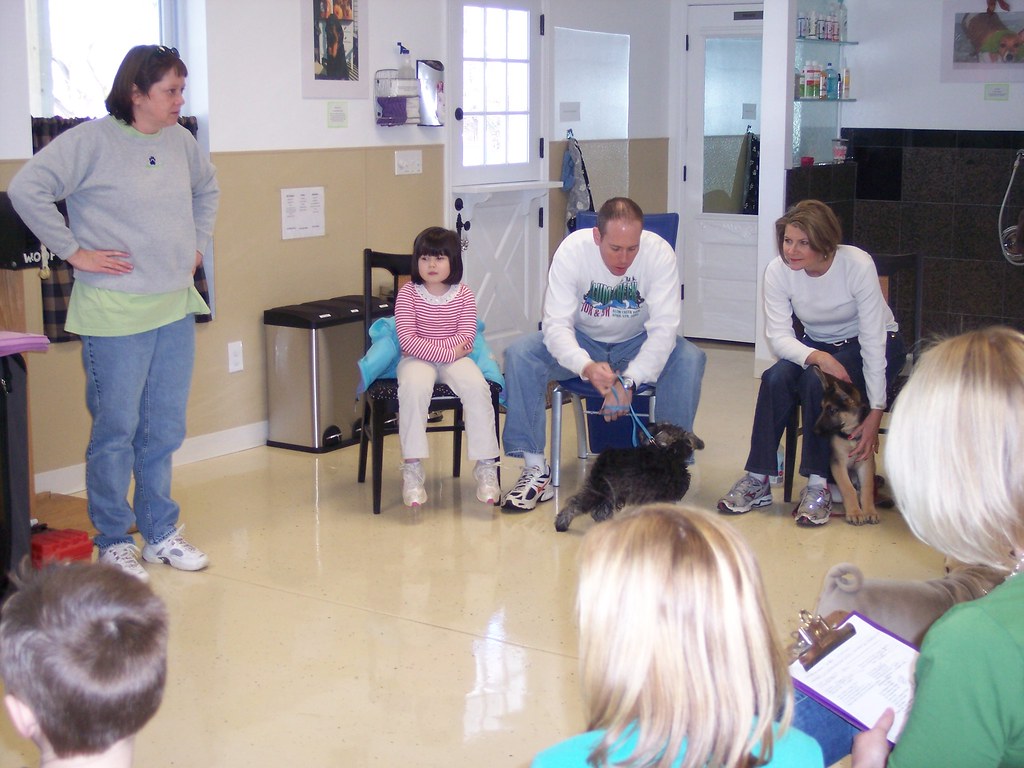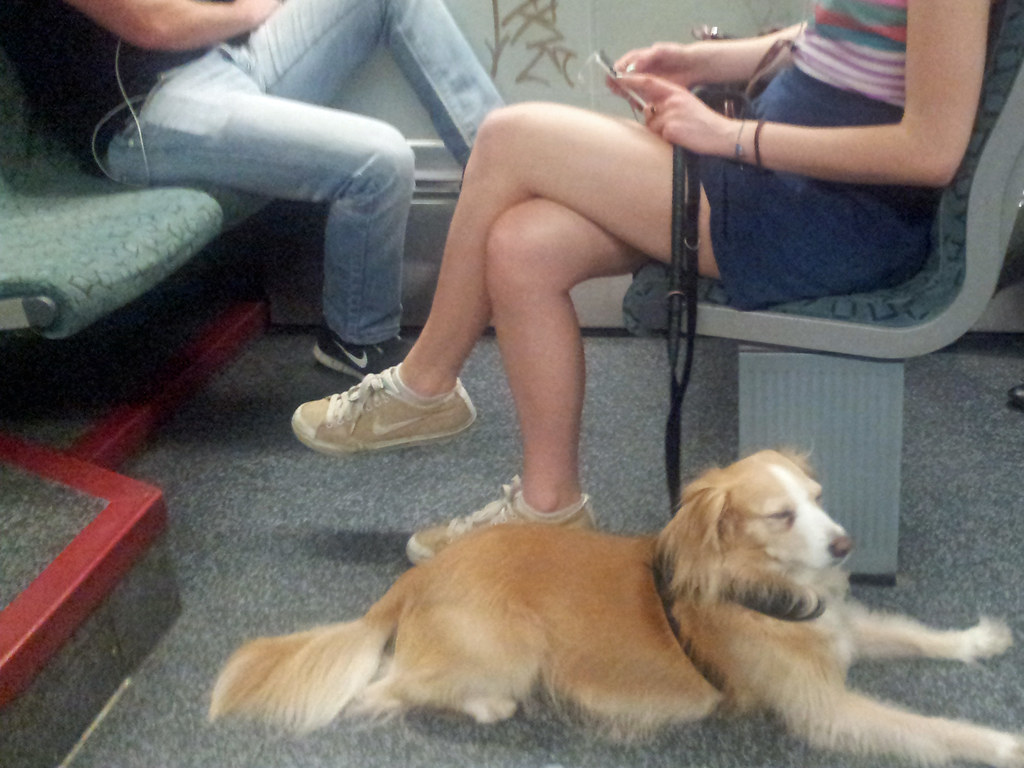A Simple Guide to Training Your Pet to Be a Good Companion
Are you tired of your furry friend constantly misbehaving and not listening to your commands? Do you wish they could be a well-behaved companion? Training your pet may seem like a daunting task, but it doesn’t have to be. With just a few simple steps, you can transform your mischievous pup into a loyal and obedient companion. In this blog post, we will guide you through the process of training your pet to be the best companion possible. So, grab some treats and let’s get started!

Understanding the Importance of Training Your Pet to Be a Good Companion
Training your pet to be a good companion is essential for both you and your furry friend. A well-behaved pet can make your life easier, less stressful, and more enjoyable. Additionally, having a good relationship with your pet can improve its health and happiness. However, many people underestimate the importance of training their pets. This results in behavior problems, including destructive actions and aggression towards humans or other animals.
By providing adequate training from an early age, you ensure that your furry friend will grow up to be a happy and well-adjusted animal that fits perfectly into your family’s lifestyle. Training also provides mental stimulation for pets as they learn new commands – it’s like brain exercise! It helps foster positive relationships between owners and pets by ensuring better communication which leads to trust-building exercises between them.
Therefore, if you want to experience all the benefits of owning a great pet without any hassles or stress caused by bad behavior patterns – start training today!

Setting Realistic Expectations for Your Pet’s Behavior
When it comes to training your pet, patience and consistency are key. It’s important to understand that every pet is unique and will require different levels of training. Setting realistic expectations for your pet’s behavior can help you avoid frustration and disappointment.
Start with simple commands like “sit” or “stay”, then gradually move on to more complex behaviors that align with your lifestyle. Remember, pets learn through repetition so be prepared to practice the same behavior multiple times a day until they master it.
It’s also important to recognize that some undesirable behaviors may take longer than others to correct. This is especially true if the behavior has been reinforced over a long period of time or if there are underlying issues such as anxiety or fear.
To set yourself up for success, have a plan in place and be consistent in following through with it. Celebrate small victories along the way and remain patient even when things don’t go according to plan. With dedication and hard work, your furry friend can become the good companion you’ve always wanted them to be!

Essential Training Techniques for a Well-Behaved Pet
Positive Reinforcement and Consistency are key when it comes to training your pet. Start with basic commands like “sit,” “stay,” and “come.” Use treats or verbal praise as rewards for good behavior, but be sure to offer them immediately after the desired behavior occurs. This will help your pet understand what they did right. As you progress, introduce more complex tricks such as fetching or rolling over.
It’s essential that everyone in the household is on board with training and uses consistent language and methods so as not to confuse your furry friend. Always keep in mind that each animal learns at their own pace, so be patient and practice regularly. Avoid punishment-based training as this can damage trust between you and your pet.
Training should also extend beyond just obedience – positive reinforcement can be used for teaching socialization skills too! Practice exposing them to different environments, people, other animals while rewarding calm/healthy interactions.
Remember: good pets aren’t born that way; they’re trained. Consistently use positive reinforcement techniques to build a strong bond with your companion for long-term success!
Building a Strong Bond with Your Pet Through Positive Reinforcement
Positive reinforcement is the most effective way to build a strong bond with your pet and cultivate good behavior. Using treats, praise, and affection can motivate your furry friend to repeat actions that you want them to do. When training your pet, consistency is key. Rewarding good behavior every time it happens helps establish clear boundaries and expectations for your pet.
It’s important to understand what motivates your pet since not all pets are motivated by food alone. Some may prefer physical rewards such as playtime or verbal praises such as “good boy!” Once you figure out what works best for your companion, include these rewards in daily interaction and training sessions.
Another essential ingredient for positive reinforcement is timing. It’s crucial to reward desirable behaviors immediately after they happen so that the correlation between action and reaction is clear in their minds.
Keep in mind that negative feedback should be avoided when using positive reinforcement techniques. Yelling at or punishing pets only serves to confuse them while causing anxiety which could lead to unwanted behaviors later on.
Regular training sessions are necessary but also make sure bonding moments with your companion exist outside of those times too – whether it’s a cuddle session on the couch or taking an extra-long walk together – this helps strengthen emotional connection further!

Common Mistakes to Avoid When Training Your Pet to Be a Good Companion
Training your pet can be a challenging but rewarding endeavor. However, it’s important to avoid certain common mistakes that may hinder progress in their training. Firstly, never physically punish them for undesirable behavior as this can lead to mistrust and fear towards you. Instead, focus on positive reinforcement by rewarding good behavior with treats or verbal praise.
Secondly, ensure consistency in the commands used during training so that your pet can easily understand what is expected of them. Using different phrases for the same action confuses them and slows down the learning process.
Thirdly, do not expect too much from your pet – they have their own personalities and limitations just like humans do. Be patient with them and stick to realistic goals throughout their journey.
Finally, always monitor their progress and adjust techniques if necessary instead of giving up after one failed attempt at training. With patience and perseverance, you will be able to train your furry companion into being a loving and obedient family member.
Maintaining Good Behavior: Tips for Consistency and Long-Term Success
Consistency is key when it comes to maintaining good behavior in your pet. Routine is important, so establish regular meal times and potty breaks. Stick to a schedule for training sessions, playtime, and exercise as well. Positive reinforcement should continue even after initial training has been completed. Praise your pet whenever they display good behavior or follow commands correctly.
Another important aspect of consistency is avoiding mixed signals. Be clear with your pet about what behaviors are acceptable and which ones are not. Consistently reinforce boundaries by redirecting unwanted behaviors and rewarding positive ones.
It’s also important to remember that pets thrive on attention from their owners. Make sure you’re giving them plenty of love and affection throughout the day, even outside of scheduled activities or training sessions.
If you notice any regression in your pet’s behavior, stay patient and consistent while addressing the issue promptly before it becomes habit-forming again. With consistent effort on both ends – yours as an owner/trainer – long-term success can be achieved!
In conclusion, having a well-trained pet is essential in creating a strong and long-lasting bond between you and your furry companion. Through setting realistic expectations, using positive reinforcement techniques, avoiding common mistakes, and maintaining consistency, you can successfully train your pet to be a good companion. Remember that training takes time and patience but the end result will be worth it.
At our shop, we offer various items that can aid in your pet’s training journey such as toys for mental stimulation or treats for positive reinforcement. Visit our shop today to find everything you need to help transform your beloved animal into the best possible version of themselves!
Answers To Common Questions
Who makes a good pet for a family with children?
A golden retriever is a great choice for families with kids.
What type of pet requires little maintenance?
A fish is a low-maintenance pet that is easy to care for.
How can I train my pet to not chew on furniture?
Use chew toys and positive reinforcement to redirect behavior.
Who is a good pet for someone living in a small apartment?
A cat is a great pet for apartment living due to their size.
What pet is best for someone with allergies?
A hypoallergenic dog like a poodle is a good choice.
How do I introduce my pet to new people?
Gradually introduce your pet to new people in a calm environment.



Leave a Reply